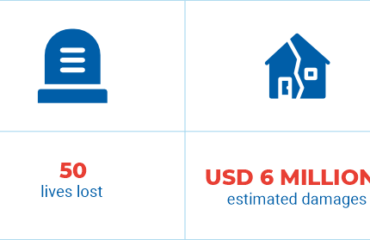
SOCIAL MEDIA
IN DISASTER MANAGEMENT
Social media plays an increasingly important role in disaster management. Some would even argue that it has played a vital role in recent years, with lives saved and much needed food, water and supplies delivered to where they are needed most.
While major news media companies provide ample coverage when a disaster occurs anywhere in the world, information gets posted and exchanged at a much faster pace on social media. Text, pictures and videos get published at lightning speed and often make it to TV, even if they are not of the usual broadcast quality.
A case in point is the earthquake that devastated Haiti in 2010 when 2,000 posts on Twitter, Facebook and other social media proved critical in guiding rescue efforts.
When an earthquake struck the island of Lombok in Indonesia, social media was key in bringing help to the villages that were affected most. Many of the pictures and videos of the devastation posted on Instagram were also helpful in raising funds.
There is also the “Safety Check” feature that Facebook has added. More and more people now use it to tell their social media network that they are safe and unharmed. It has already been used by 9 million people in the United States when hurricanes have struck.
Celebrities have been known to turn to social media for fund-raising, appealing to their fan base. US celebrity James Woods used his Twitter account during the fires that ravaged California in 2019. Woods used Twitter to post reports and updates that resulted in several people being reunited with their loved ones.
As ordinary people become journalists, a lot of information gets shared and published. Disasters get reported as they happen. And with this wealth of information, which is posted more often in real-time, rescue organisations and agencies are able use this to map out relief efforts.
While there is the freedom of sharing information, there is also the issue of authenticity and credibility. “Fake news” has now proliferated to the extent that a lot of rescue groups treat social media posts with caution. Other posts can be misleading too. A picture of one flooded street cannot give you the overall situation in a community. But while this has become an issue, it still cannot be denied that social media plays a significant role in disseminating information and bringing aid to where it is much needed.
Source:
https://www.preventionweb.net/news/how-social-media-shaping-disaster-governance
https://www.telegraph.co.uk/technology/information-age/how-social-media-can-help-during-crisis/
https://preparecenter.org/topic/social-media-disasters/
Written by : Judith Garcia Meese


